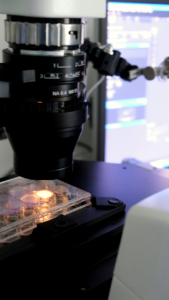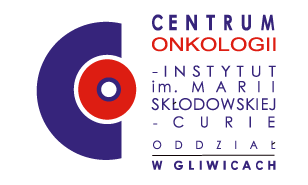Welcome to Kardio-Med Silesia Site
Silesian Park of Medical Technology Kardio-Med Silesia
is a modern research center meet the highest European standards.
 Cytotoxicity tests are an important step in the biological evaluation of medical devices that are intended to come into contact with the human body. These tests are extremely important in the context of assessing the biocompatibility of these devices according to the guidelines established by various standards and regulations, such as GLP (Good Laboratory Practice), ISO 10993 (International Organisation for Standardisation) and OECD guidelines.
Cytotoxicity tests are an important step in the biological evaluation of medical devices that are intended to come into contact with the human body. These tests are extremely important in the context of assessing the biocompatibility of these devices according to the guidelines established by various standards and regulations, such as GLP (Good Laboratory Practice), ISO 10993 (International Organisation for Standardisation) and OECD guidelines.
In the design and manufacture of medical devices, such as implants, prostheses or surgical instruments, an important aspect is to ensure that these devices do not cause negative reactions in the human body. This means that they must be subjected to thorough testing, which includes an analysis of their cytotoxicity. Cytotoxicity refers to the ability of substances or devices to damage or kill cells, which can lead to harmful effects on the body.
 In the cell laboratory of the Silesian Park of Medical Technology Kardio-Med Silesia, cytotoxicity tests are carried out using various methods. One popular in vitro cytotoxicity test is the XTT method, which is based on the reaction between the tetrazolium salt XTT and mitochondrial dehydrogenase. It is a relatively simple and precise method to assess the effect of the medical device under test on the ability of cells to convert the XTT compound into a coloured formazan. The intensity of the formazan colour is a measure of cell viability – the more intense the colour, the greater the viability.
In the cell laboratory of the Silesian Park of Medical Technology Kardio-Med Silesia, cytotoxicity tests are carried out using various methods. One popular in vitro cytotoxicity test is the XTT method, which is based on the reaction between the tetrazolium salt XTT and mitochondrial dehydrogenase. It is a relatively simple and precise method to assess the effect of the medical device under test on the ability of cells to convert the XTT compound into a coloured formazan. The intensity of the formazan colour is a measure of cell viability – the more intense the colour, the greater the viability.
As part of the ISO 10993 guidelines, GLP-standard cytotoxicity testing is a mandatory step in the biological evaluation process of medical devices before they are released for use. The consideration of compliance with the guidelines of these standards is crucial, especially in the context of compliance with the requirements of the MDR (Medical Device Regulation) in the European Union. It is through cytotoxicity testing that it can be assessed whether medical devices are safe for patients and whether they meet biocompatibility criteria.
The conclusion is clear – cytotoxicity tests, such as the XTT method, play an irreplaceable role in the process of evaluating medical devices for their potential adverse effects on human health. They support the drive to provide patients with medical devices of the highest quality that comply with the latest standards and guidelines. Through these tests, it is possible to effectively identify and eliminate risks associated with potential hazards from exposure to medical devices.







Copyright 2023 Kardio-Med Silesia. Site designed by Daniel 'zoNE' Gabryś. All rights reserved.